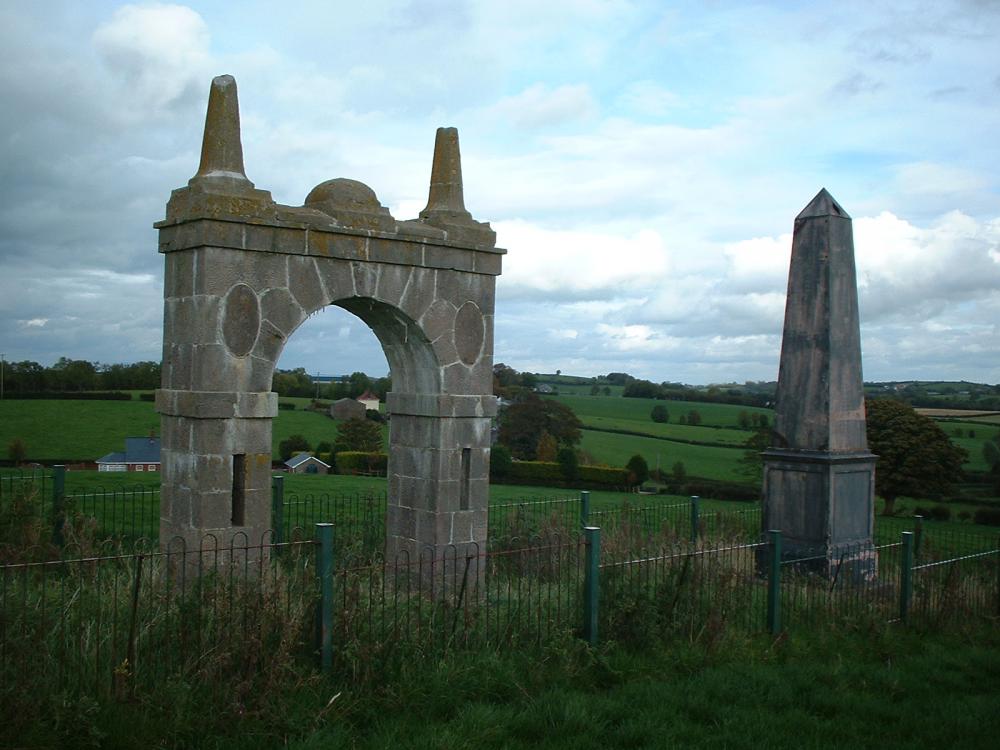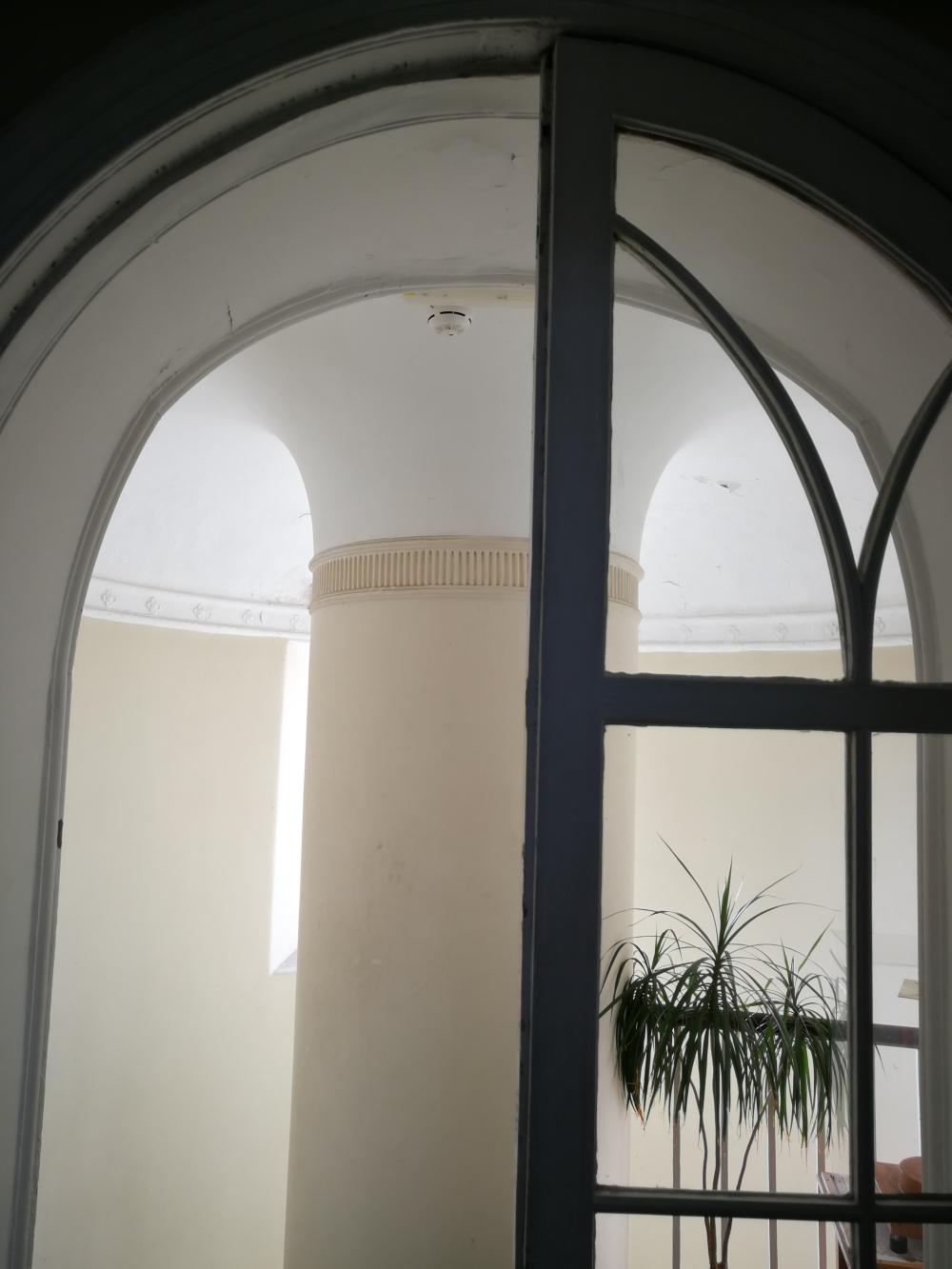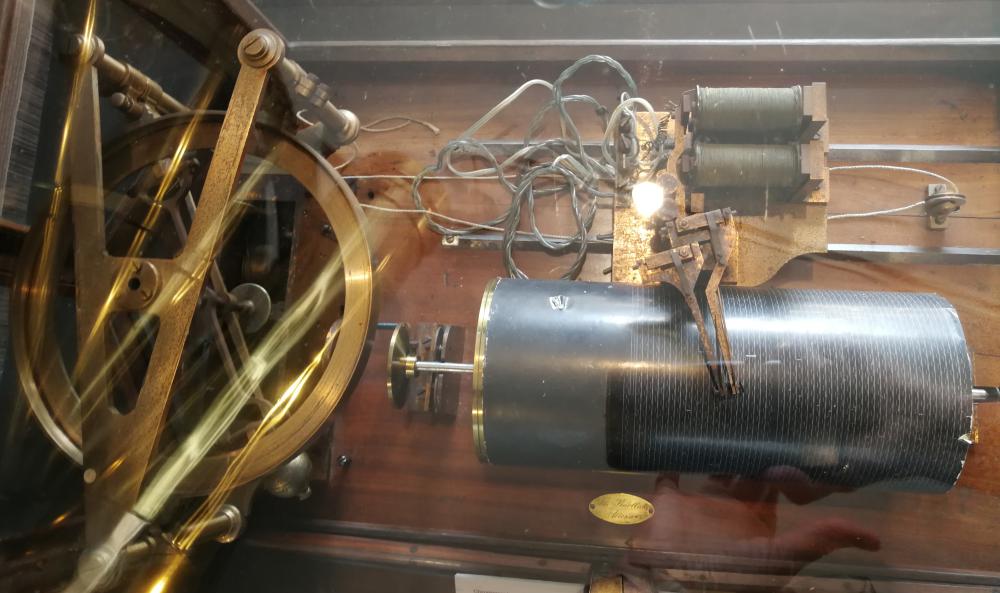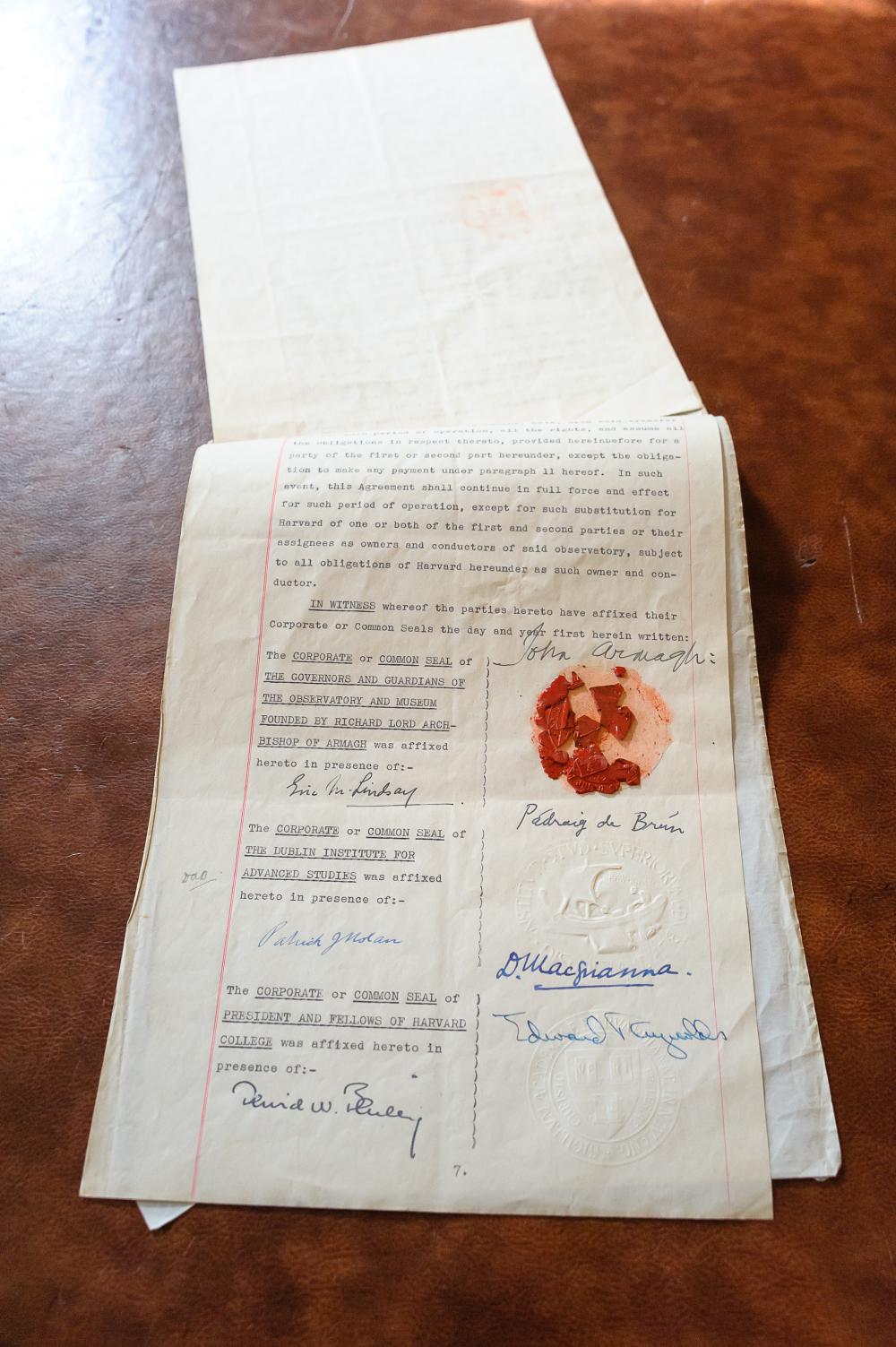
Category of Astronomical Heritage: tangible immovable
Armagh Observatory, Armagh, Northern Ireland, UK

Description
Geographical position
Armagh Observatory, College Hill, Armagh BT61 9DB, Northern Ireland, UK
Location
Latitude 54°21’11’’N, Longitude 6°39’00’’W, Elevation 60m above mean sea level.
IAU observatory code
981
Description of (scientific/cultural/natural) heritage

Fig. 1. Armagh Observatory from Southside (© Armagh Observatory)
Armagh Observatory is of considerable historic, social, scientific and architectural interest. It was one of the many buildings constructed by Archbishop Richard Robinson, as part of his programme of building, improvement and public endowment which expressed on a grand scale the cultural aspirations of the Anglo-Irish in the epoch of their greatest confidence and ambition. The Observatory, designed by Francis Johnston (1760--1829), whose construction began in 1789, along with the Robinson Library of 1771, were key buildings built in Armagh. Johnston is considered to be Ireland’s pre-eminent architect of the period and further designed the Houses of Parliament and the General Post Office in Dublin. The buildings and structures that comprise Armagh Observatory complex today, including the Robinson Memorial Dome, the entrance gates, and gate lodge, are largely in their original form, and demonstrate the high quality of eighteenth and nineteenth century workmanship and materials.

Fig. 2a. Armagh Grade A listed Observatory building from North (1790) (© Armagh Observatory)

Fig. 2b. Armagh Observatory with the early dome (1790), (© Armagh Observatory)

Fig. 2c. Troughton Equatorial telescope (1789, installed in 1795), (© Armagh Observatory)
The Observatory was also built to serve as a home for the Director and family and is well preserved. It today functions as the offices for the Observatory’s astronomers, as well as retaining many of the original telescopes and instrumentation, much of which remains in situ and in a similar state to when used for scientific measurement. The Troughton equatorial telescope, designed in 1789 and installed in 1795, is believed to be the oldest in the world that remains set in its original dome. See listed heritage of the Observatory.
Armagh Observatory was the second public observatory to be established in Ireland -- the first was Dunsink Observatory in Dublin (1785). It is the oldest scientific institution in Northern Ireland and has functioned continuously as an astronomical research centre since foundation. The observatory is built on a hill and the buildings are now within the Armagh Astropark (14 acres = 57,000 m2 = 35 ha).
In the 17th century observatories like Paris (1667) and the Royal Observatory at Greenwich (1675) the architecture with an impressive facade was more important than its practicality for astronomy. In these observatories observations with portable instruments were made from a large room with tall windows in the ground floor or from the platform on the roof.

Fig. 3a. Armagh Observatory with the early dome (1790) and the second dome (1827), (© Armagh Observatory)

Fig. 3b. Armagh Observatory, Robinson Dome (1885), (© Armagh Observatory)
The buildings of King’s Observatory, Kew (1768), Dunsink Observatory, Dublin (1785), Seeberg Observatory, Gotha (1788), and Armagh Observatory (1790) represent a revolution in observatory design (Gotha is not preserved). The characteristic feature of an observatory, the dome, dominating the architecture, appears for the first time in these observatories. The key additional feature in both Dunsink, Gotha, and Armagh is that the dome rested on a stone pillar brought up from the substrata below the building to provide stability for the instruments situated within the dome. (The next famous early domes which are well preserved in their original shape are in Tartu Observatory, Estonia (1802) and Göttingen Observatory (1803/16). This also applied to the second dome in Armagh, built in 1827 following an endowment by Archbishop George Beresford.
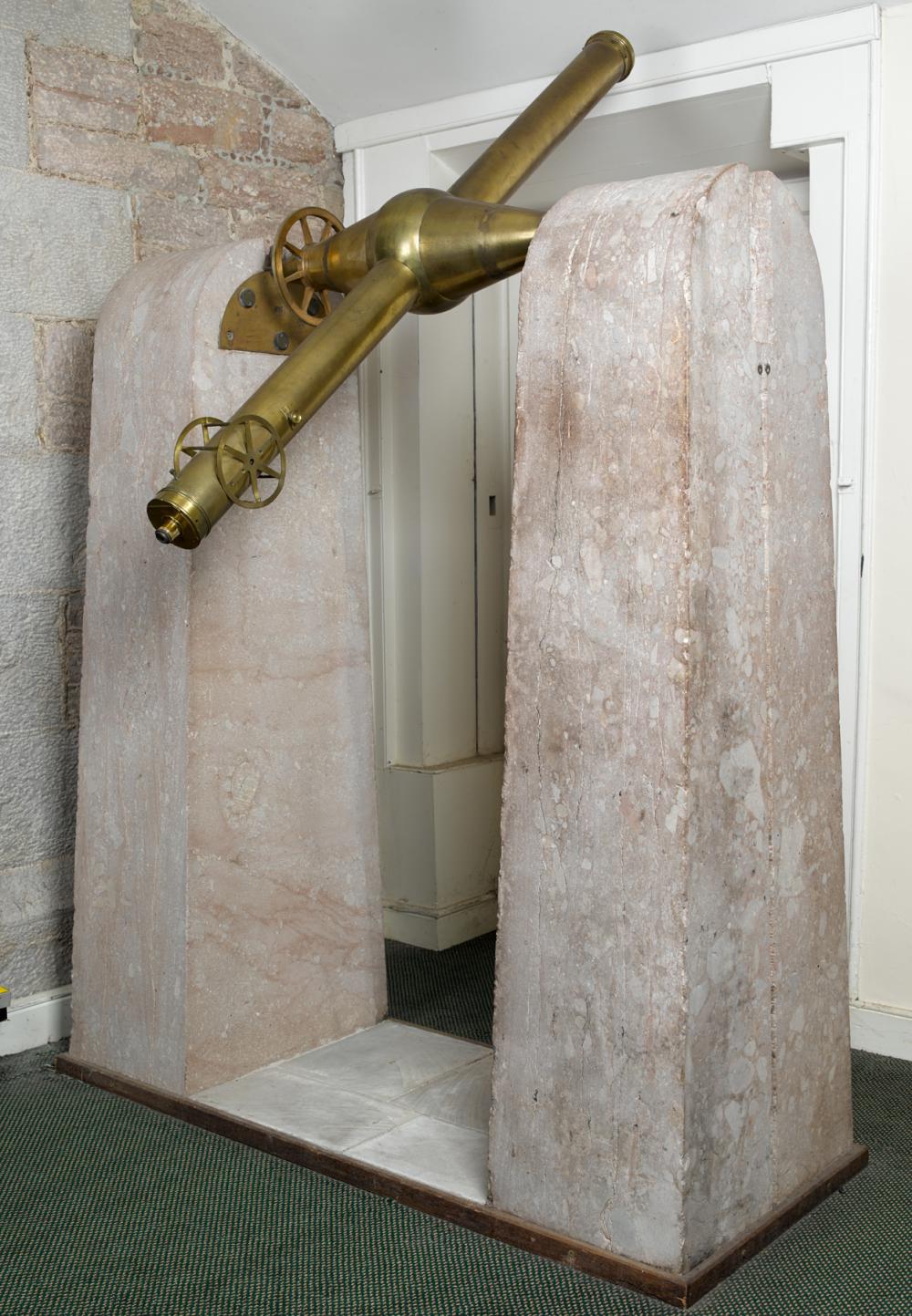
Fig. 4. Transit Instrument, Thomas Jones & Sons of London (1827) (© Armagh Observatory)
The requirements for the stability of the instruments were thus taken into account for the first time, along principles laid out by Henry Ussher (1741--1790), the first Director of Dunsink. In addition, this isolated the telescopes from vibration caused by the use of the observatory building as a residence. The Transit Instrument (installed 1827) and Mural Circle (1831) were placed on stable, free standing pillars, not connected to the rest of the building in order not to transmit vibrations to the instruments. This was the model for observatories since the 19th century.

Fig. 5. Armagh Observatory with the earliest dome (1790, Troughton), second dome (1827, Grubb 15’’), and in the foreground the Robinson Memorial dome (1885, Grubb 10’’), (© Armagh Observatory)
The observatory building typology as it is expressed in both the Armagh Observatory and the Dunsink Observatory thus represents a significant period in our history where the technological developments of the astronomical instruments required that the building design itself began to be influenced by and formed an integral relationship with the function of the observational instruments.
The buildings are a stone with conglomerate rubble for the main walling and ashlar limestone for the dressings. The proportions are classical, and the decoration is minimal. The main elevation is a three-bay, the entrance is central and approached by a fanned flight of seven stone steps. The main feature of the south face is the circular telescope tower which bears the inscription "The heavens declare the glory of God" from Psalm 19, the motto given by the founder, Archbishop Robinson. Approximately two thirds of the bulk of the tower projects beyond the body of the building. The whole feature is capped by a hemispherical copper clad dome. The telescope is supported on a central limestone pillar rising through the full height of the tower and braced against the outer wall by stone treads of the spiral stairway.
The interior contains an astonishing wealth of elegant craftsmanship in stone, wood, plaster and metal, beadings; flutings; chair rails and skirtings; curved chimney-breast and cupboards; arches; gates and mantel pieces combined to create a living museum of Francis Johnston’s best work. The valuable collection of clocks and astronomical instruments is displayed throughout. Several fake windows were also included to retain the illusion of symmetry in the building appearance.
Three meridian marks, used to align the transit instruments, remain in the countryside in Armagh today (a total of 6 were used over the Observatory’s history). Two are to the North of the Observatory in the townland of Tullyard, and one to the South in the townland of Ballyheridan.

Fig. 6. First Weather Records (1794) (© Armagh Observatory)
- Reverend James Archibald Hamilton (1748--1815), graduated Trinity College, Dublin, with B.A. in 1769, became the first Director of Armagh Observatory. He previously had a small private observatory in his home in Cookstown, Co. Tyrone.
Hamilton initiated observations of stars and of sunspots and especially a series of meteorological recordings; thus since 1795 exists an unbroken series of
daily weather records (though the log for the period 1825--1832 has since been lost. - The Reverend Dr Thomas Romney Robinson (1792--1882), the 3rd Director (1792--1882), invented the cup anemometer for measuring wind speed. Armagh Observatory is today recognised as a Centennial Observing Station by the World Meteorological Organisation (WMO).
Romney Robinson used the Transit Instrument and Mural Circle to compile the catalogue "Places of 5,345 Stars: observed from 1828 to 1854", published in 1859 with epoch 1840.0. Printed at the expense of Her Majesty’s Government on the recommendation of the Royal Society. A leading star catalogue of its day, it became known as the "Armagh Catalogue" and a standard work of positional astronomy. The catalogue had taken three decades to compile and established the scientific reputation of the Observatory. Robinson was a friend of Charles Babbage (1791--1871), who said was "indebted" for having reminded him about the first time he came up with the idea of the calculating machine.

Fig. 7a. Archbishop Robinson Observatory Medal, made by William Mossop, commemorating the foundation of Armagh Observatory in 1789 (© Armagh Observatory)

Fig. 7b. Archbishop Robinson Heavens Declare the Glory of God (© Armagh Observatory)

Fig. 8a. 15-inch-Reflecting Telescope, by Howard Grubb of Dublin (1835) in the 1827 Dome (© Armagh Observatory)

Fig. 8b. 10-inch-Refractor, made by Thomas Grubb of Dublin (1885), (in the Robinson Memorial Dome, 1885), used for the New General Catalogue of Nebulae and Clusters of Stars (NGC), (© Armagh Observatory)

Fig. 8b. 10-inch-Refractor, Grubb of Dublin (1885), (© Armagh Observatory)
The Grubb 15-inch-reflector was built by Thomas Grubb of Dublin and installed in 1835 in the 1827 Dome. It was the first successful equatorially mounted reflector (German-style with a single pier, cf. Fraunhofer) with clock driven gearing for rotation around the axis, so able to be slewed to, and then track, a star. It could be used with both a Newtonian and a Cassegrain focus.
The telescope is also believed to be the first example of mirror-cell support, using compound levers to distribute the weight of the primary mirror evenly as the telescope tilted. It is thus the forerunner of the modern equatorial reflector.

Fig. 9a. NGC catalogue -- New General Catalogue of Nebulae and Clusters of Stars (1888) (© Armagh Observatory)

Fig. 9b. Spiral nebula M 51 (© Armagh Observatory)
- The 4th Director, Dr John Louis Emil Dreyer (1852--1926), published the New General Catalogue of Nebulae and Clusters of Stars in 1888, and is generally regarding as the most famous publication to have come out of Armagh, the NGC object numbers still being regularly used by astronomers today, with 7,840 entries. While drawing on many sources to compile the catalogue, the Grubb 10-inch telescope was used to clarify any doubts and inconsistencies. Two supplementary catalogues, the Index Catalogues (IC), were published in 1895 and 1910, providing an additional 5,386 entries.
- Ernst Julius Öpik (1893--1985), one of the most outstanding astrophysicists of his generation, came to Armagh Observatory in 1948 as a refugee from Estonia. In the tranquil surroundings of Armagh Observatory he wrote prolifically on a wide range of astronomical subjects. His published papers extend over more than seventy years, from 1912 to his death in 1985. His discoveries, which were many and various, include:
(i) the discovery of degenerate stars, i.e., white dwarfs;
(ii) the first ’proof’ of the extragalactic nature of M31, the Andromeda galaxy, in his calculation of the distance of M31 as 450,000 parsecs in 1922; ....
(iii) the computation of evolutionary models of main-sequence stars into giants, carried out in the 1930’s, over a decade earlier than the computations of Fred Hoyle (1915--2001) and Martin Schwarzschild (1912--1997);
(iv) the prediction of the density of craters on the surface of Mars which were confirmed 15 years later by the first planetary probes, and
(v) the prediction of a cometary cloud in the outer portion of the Solar System, that came to be known as the Öpik-Oort Cloud.
History

Fig. 10. Act of Parliament Observatory in Armagh for Ever (© Armagh Observatory)
The Observatory was opened in 1790 by Richard Robinson (1708-1794), 1st Baron Rokeby, Archbishop of Armagh and Primate of All Ireland, in the Age of Enlightenment. He was also Vice-chancellor of the University in Dublin (1765--1791). Robinson was believed to have been inspired to build the observatory by William Herschel’s discovery of Uranus in 1781, and their likely acquaintance from connections in the City of Bath. The Observatory was part of Archbishop’s (unrealised) plan to have a second university in Ireland, to be built in the city of Armagh (as late as in the 1990s Queen’s University of Belfast opened an outreach centre in Armagh). The observation of the transit of Mercury in 1782 and the presentation of Hamilton’s results by Neville Maskelyne (1732--1811), the Astronomer Royal for England, to the Royal Society of London, impressed Archbishop Robinson when making his plans for an observatory in Armagh. He appointed Hamilton as its first Director.
Maskelyne described in a letter the requirements written to Hamilton in 1790 for a modern observatory and offered to help to purchase equipment in London for the new observatory. The essential instruments to determine the positions of stars were: a meridian circle, a transit instrument and an accurate pendulum clock. Two clocks, made by Thomas Earnshaw, were bought.
In the 19th century, following a gift from Queen Victoria, Armagh obtained the instruments and telescopes used by King George III to observe the Transit of Venus from his Observatory in King’s Observatory, Kew near London in 1769.
Fig. 11a. Troughton Equatorial Circle (1795) (© Armagh Observatory)
Fig. 11b. Troughton Equatorial (1789, mounted in 1795) in the 1790 dome (© Armagh Observatory)
List of Instruments
Telescopes
- 6-inch-Short Reflector, made by James Short (1710--1768) of Edinburgh and London (1769), with Newtonian, Cassegrain and Gregorian foci, as used by King George III to measure the Transit of Venus
- 4-inch-Gregory Reflecting Telescope (10cm, 2-foot), James Short of Edinburgh and London (1769), commissioned by King George III to the Royal Observatory at Kew.
It was used to measure the Transit of Venus in 1769. Queen Victoria later donated many Kew Instruments to Armagh. - Smaller instruments like orreries
- Troughton 2.75-inch-Equatorial Refracting Circle, made by John & Edward Troughton of London (1789, mounted in 1795), in the ealiset dome (1790)
- 3.8-inch-Transit Instrument, Thomas Jones & Sons of London (1827), acquired through the help of Archbishop Beresford,
mounted on heavy stone pillars (in Transit/Meridian Room), used together with the Mural Circle from 1827 to 1883
Fig. 12a. Mural Circle, Thomas Jones & Sons of London (1831), mounted on massive stone pier (in the Meridian Room), (© Armagh Observatory)

Fig. 12b. Mural Circle (© Armagh Observatory)
- 7.5-inch-Mural Circle, Grubb, Thomas Jones and Sons of London (1831), mounted on massive stone pier (in the Meridian Room)
- Early electrical Chronograph, made by Knoblich of Altona (1865) -- Altona (since 1938 an urban borough "Bezirk" of Hamburg) was from 1640 to 1864, under the administration of the Danish monarchy, then from 1867 to 1937 Kingdom of Prussia.
- 15-inch-Reflector (38cm), Howard Grubb of Dublin (1835), (in 1827 Dome)

Fig. 13a. 10-inch-Refractor, made by Thomas Grubb of Dublin (1885), (in Robinson Memorial Dome, 1885), (© Armagh Observatory)
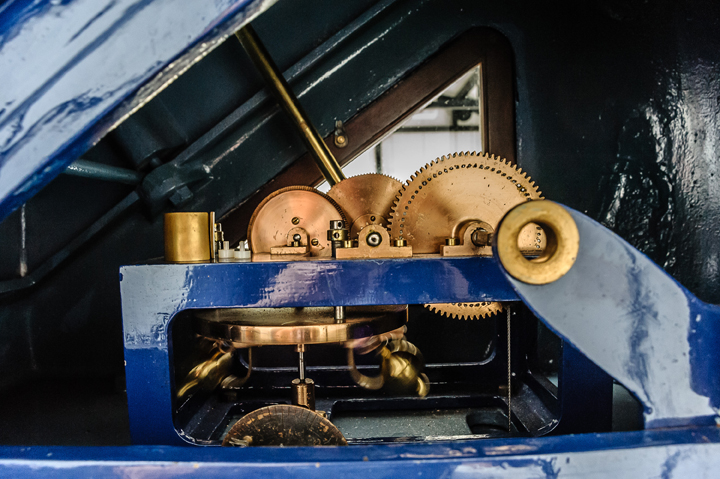
Fig. 13b. Clockwork drive of the 10-inch-Grubb (© Armagh Observatory)
- 10-inch Refractor, Thomas Grubb of Dublin (1885), (in Robinson Memorial Dome)
- Calver Telescope, 18-inch-reflector, George Calver (~1882) presented to Armagh Observatory in 1917 (in Calver Dome)
- Armagh Robotic Telescope, 43-cm-reflector, Plane Wave Instruments (2011), (in ART Dome).
- Annie Jump Cannon’s Eyepiece (~1900)
Cannon’s work was central in the development of stellar classification. She used this eyepiece at Harvard Observatory to measure star brightness. The Observatory’s director later gifted it to Armagh while visiting Eric Lindsay, Armagh’s seventh director, who had studied at Harvard.

Fig. 13c. Calver Telescope, 18-inch-Reflector, George Calver (~1882) in Calver Dome (1917), (Photo: Gudrun Wolfschmidt)

Fig. 14a. Earnshaw No 1 Regulator (1790) (© Armagh Observatory)

Fig. 14b. Chronometer for the Transit Instrument (© Armagh Observatory)
Regulators / Pendulum Clocks
- Shelton, London, ~1769
- Recordon, London, ~1770
- John Crosthwaite of Dublin, ~1785
- Earnshaw I, Thomas Earnshaw of London, ~1790
- Earnshaw II, Thomas Earnshaw of London, ~1790
- Buchanan, Dublin, ~1790
Fig. 15. Meridian Markers (© Armagh Observatory)
Meridian Marks

Fig. 16a. Robinson Anenometer (© Armagh Observatory)

Fig. 16b. Weather Record, Aurorae Carrington Event (1859) (© Armagh Observatory)
Meteorological Instruments
- Stevenson Screen with a variety of thermometers and rain gauge
- Campbell-Stokes Sunshine Recorder (Thermograph)
It was invented by John Francis Campbell (1821--1885) in 1853, and improved in 1879 by Sir George Gabriel Stokes ( 1819--1903),
an Irish mathematician and physicist. Stokes married Mary Robinson, daughter of Armagh Observatory’s third director Romney Robinson. - 4-cup Anemometer, invented by Robinson in 1846, the one on the Observatory roof today dates from 1870.
- Kew Pattern Barometer
- Automated Weather Station

Fig. 17a. Meteorological Cage (© Armagh Observatory)

Fig. 17b. Places of 5345 Stars (Dublin 1859) (© Armagh Observatory)
Thomas Romney Robinson (1792--1882) compiled the Armagh catalogue of 5345 stars, deduced from observations (1820 to 1854). Robinson was a friend of Charles Babbage (1791--1871), who said was "indebted" for having reminded him about the first time he came up with the idea of the calculating machine.
The results of the observations were published in "The Transactions of the Royal Irish Academy".
Directors of Armagh Observatory
- 1793-1815 -- James Archibald Hamilton (1748--1815)
- 1815-1823 -- William Davenport (1772--1823)
- 1823-1882 -- Thomas Romney Robinson (1792--1882)
- 1882-1916 -- Johan Ludvig Emil Dreyer (1852--1926)
- 1917 -- Joseph A. Hardcastle (1865--1917)
- 1918-1936 -- William F.A. Ellison (1864--1936)
- 1937-1974 -- Eric Mervyn Lindsay (1907--1974)
- 1976-1994 -- Mart de Groot (1938--)
- 1995-2016 -- Mark E. Bailey (19..--)
- 2016-- -- Michael G. Burton (1961--) [First Director of the Armagh Observatory and Planetarium]
Directors of Armagh Planeatrium
- 1967--1968 Patrick Moore (1923--2012)
- 1968--1971 Tom Rackham
- 1971--1989 Terence Murtagh
- 1990--1995 Ian Griffin
- 1996--2015 Tom Mason
- 2016-- Michael Burton
State of preservation

Fig. 18a. Historical buildings of Armagh Observatory (© Armagh Observatory)
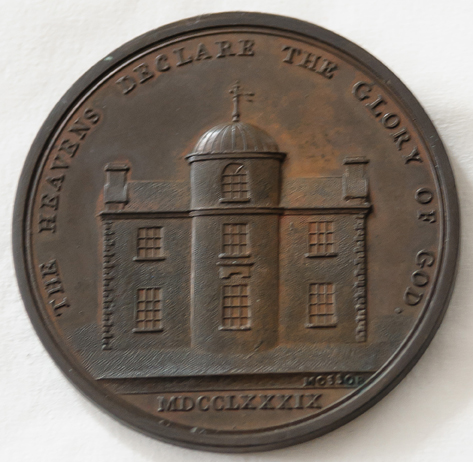
Fig. 18b. Armagh Observatory Medal (© Armagh Observatory)
The Observatory is a Grade A listed heritage building (reference HB15/16/003), and the Robinson Memorial Dome (housing the Grubb 10-inch-refractor from 1885) is also Grade B1 listed (reference HB15/16/004) (Department for Communities, Northern Ireland Executive). Further, the Observatory is located within a Historic Garden Reference A-032 and appears on the Northern Ireland Heritage Gardens Inventory (1992) A/032 H878457 as a Landscaped Park.
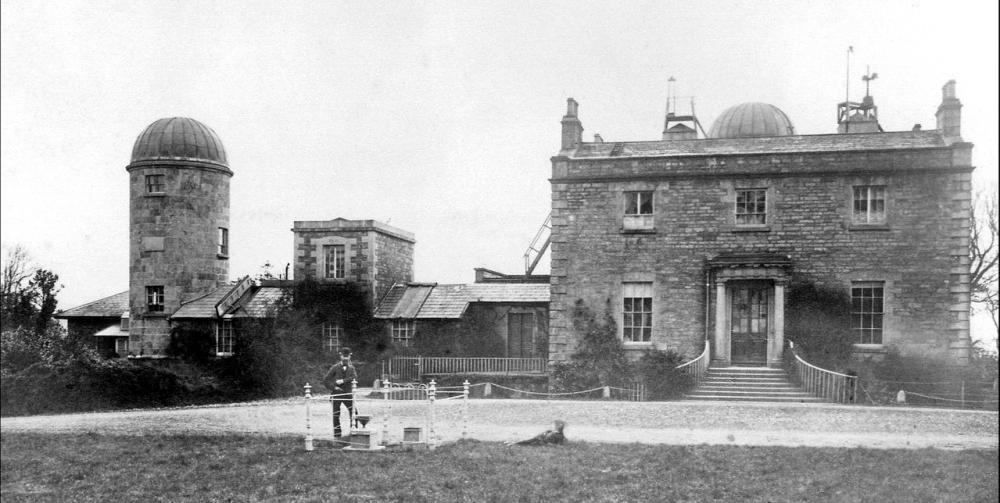
Fig. 18c. Armagh Observatory from the North (1883)
The Troughton (1790), 1827 and Robinson Memorial (1885) Domes are original. However conservation works, supported through the National Lottery Heritage Fund, were undertaken in 2000, as described below. The Calver Dome was replaced at this time.
The 1790 Troughton Dome is mostly original including the internal ribbed ceiling and the basic wooden structure. In the late 20th century renovations, the corroded supporting copper rail was replaced with a stainless-steel rail and the outer copper covering was renewed. The mechanisms for opening and closing the slit and for rotating the dome are all original. The outer gutter, originally in lead, was replaced with a modern composite material as was the roof of the main building.
For the 1827 Dome, a significant part of the wooden structure had to be replaced, including the shutter. The copper outer covering was also replaced.
One step forward in the direction to the Unesco application was made in 2023: Irish astronomers hope stars align for new North-South collaboration (Link) -- An event to celebrate an all-island Irish astronomy initiative will see the community honour one of their own, renowned astronomer Martin Rees.
Comparison with related/similar sites

Fig. 19. Observatory from South Side, Robinson Memorial Dome (1885), and Human Orrey (© Armagh Observatory)
Armagh Observatory is a one dome observatory building; an additional dome was added later -- like in Dunsink.
The buildings of Dunsink Observatory Dublin (1785), Seeberg Observatory, Gotha (1788) and Armagh Observatory (1790) represent a revolution in observatory design (Gotha is not preserved); also the earlier building of King’s Observatory, Kew (1768) should also be mentioned.
The characteristic feature of an observatory, the dome, dominating the architecture, appears for the first time in these observatories. The next famous early domes which are well preserved in its original shape are in Tartu Observatory, Estonia (1802) -- a cylindrical dome, and Göttingen Observatory, Germany (1803/16).
Threats or potential threats
The Observatory is situated on a hill near the centre of the City of Armagh, but remains still largely surrounded by open countryside. Threats include encroaching urban development, especially the spread of lights.
The Observatory building remains in good state, though is in need of continual upkeep and repair. A conservation management plan was developed in 2019. This concluded that the conservation of the building must be considered in conjunction with the instruments for which it was designed to house. Many of these instruments of exceptional value remain in-situ in their original positions. The relationship between the building and the instruments is the first link in a three-part chain which is essential when establishing the Observatory’s significance and conservation strategy. The second link in this chain is that of the instruments themselves to the original clocks commissioned at the same time which were required for the accurate scientific astronomical observations and to this day also remain within the Observatory. The critical interlocking relationship of these three elements is what forms the corner stone of significance of each individual element (building-instruments-clocks).
However, as the technological requirements to facilitate ongoing astronomical research have developed and changed throughout the years, additional pressures have been placed on the historic building by the way of service requirements. Some of these requirements have resulted in unsympathetic insertions such as data trunking and surface mounted services throughout the grade A listed building. It is now the established that in order to safeguard the Observatory and continue to facilitate consistent state of the art astronomical research at this important site a solution must be sought to remove the pressures currently placed on the historic building.

Fig. 20a. Armagh Museum of the Moon on the Mall (© Armagh Observatory)

Fig. 20b. Hypercube Hill of Infinity (© Armagh Observatory)
One such proposal currently being explored is to construct a modern research facility adjacent to the historic building with a purpose-built archive designed to ensure the protection of the valuable artefacts. This would allow for the removal of the inappropriate service installation and full restoration of the Observatory as well as exploration of alternative uses which are more compatible with the preservation of the historic building and in-situ artefacts. The ambition of the Armagh Observatory and Planetarium (AOP) as an organisation through the restoration of the Observatory is to allow access of this unique and prized historic building, raising awareness of the significant role and place in the world history played by the Armagh Observatory and to share the contribution that AOP has made in the pursuit of knowledge and understanding of the place held by humanity in the cosmos.
Present use

Fig. 21a. Human Orrery (© Armagh Observatory)

Fig. 21b. Stone Circle Calendar (© HillofInfinity)
Armagh Observatory and Planetarium and the 14-acre Astropark (with historical telescopes, scale models of the Solar System and the Universe, sundials, and the Human Orrery) is Ireland’s leading centre for astronomical research and education.
Research continues from within the Observatory building today, as it has since foundation in 1790. Daily weather readings are made at 9am (GMT) every day, a sequence extending back to 1795.
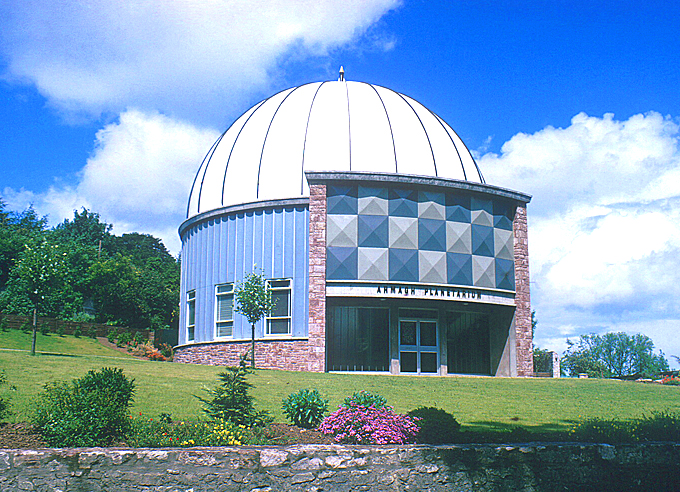
Fig. 22a. Armagh Planetarium (1968) (© Armagh Observatory)

Fig. 22b. Armagh Planetarium, 2018 (© Armagh Observatory)
The Armagh Planetarium was opened in 1968 through the efforts of the 7th Director, Dr Eric Lindsay, and now attracts over 50,000 visitors per year. It provides a centre for public education and outreach in astronomy, with the first Director being Dr Patrick Moore, well-known as the long-time presenter of the BBC’s Sky at Night show. It is the longest running planetarium in the British Isles. The Observatory and Planetarium operated as separate institutions on the same site until 2016, when they were combined into one institution, the Armagh Observatory and Planetarium. Professor Michael Burton was then appointed as the first Director of the combined institution.
Astronomical relevance today

Fig. 23. Global warming (© Armagh Observatory)
Research topics undertaken today in Armagh Observatory include Solar research (the Sun’s outer atmosphere, solar wind, the Sun’s variable magnetic activity, and super-flares), the Solar System (dynamical structure, evolution and origin of objects in the inner and outer solar system), Stellar and Galactic research (stars and stellar evolution, the Galaxy and its interstellar medium), and Extragalactic research (formation and evolution of galaxies).
Astronomers make use of ground based telescopes such as ESO’s VLT, the Swedish Solar Telescope, radio telescopes like the Mopra millimetre-wave telescope, satellites such as Kepler and K2, and use high performance computing to simulate observations and compute models.
International projects include the SALT which is the biggest telescope staring at the Southern sky, the new Solar Telescope DKIST which is being built in Maui in Hawaii; the low frequency radio array I-LOFAR which astronomers are using to study flares from stars; CTA which will detect the highest energy gamma-rays and is being built in La Palma and Chile and the Gravitational-wave Optical Transient Observer survey telescope on La Palma GOTO whose prime goal is to detect the optical counterpart of gravitational wave events.
References
Bibliography (books and published articles)
- Butler, C.J.: The 15-inch Equatorial Reflector by Thomas Grubb at armagh Observatory. In: Bulletin of the Scientific Instrument Society, Nr. 129 (2016), p. 2-9.
- Bennett, Jim A.: "Hamilton, James Archibald.", retrieved 10 February 2020.
- Bennett, Jim A: "Church, State and Astronomy in Ireland: 200 Years of Armagh Observatory." Published by Armagh Observatory in Association with the Institute of Irish Studies, Queen’s University of Belfast 1990.
- Butler, John: "The 15-inch Equatorial Reflector by Thomas Grubb at Armagh Observatory." In: SIS Bulletin 129 (June 2016), pp. 2--9.
- Butler, John: "Armagh Observatory’s meridian marks." In: Astronomy & Geophysics 57 (2016), Issue 2, p. 2.27--2.31.
- Butler, John & Michael Hoskin: "The Archives of Armagh Observatory." In: Journal History of Astronomy 18 (1987), pp. 295--307.
- Donnelly, Marian Card: A Short History of Observatories. Eugene: University of Oregon Books 1973.
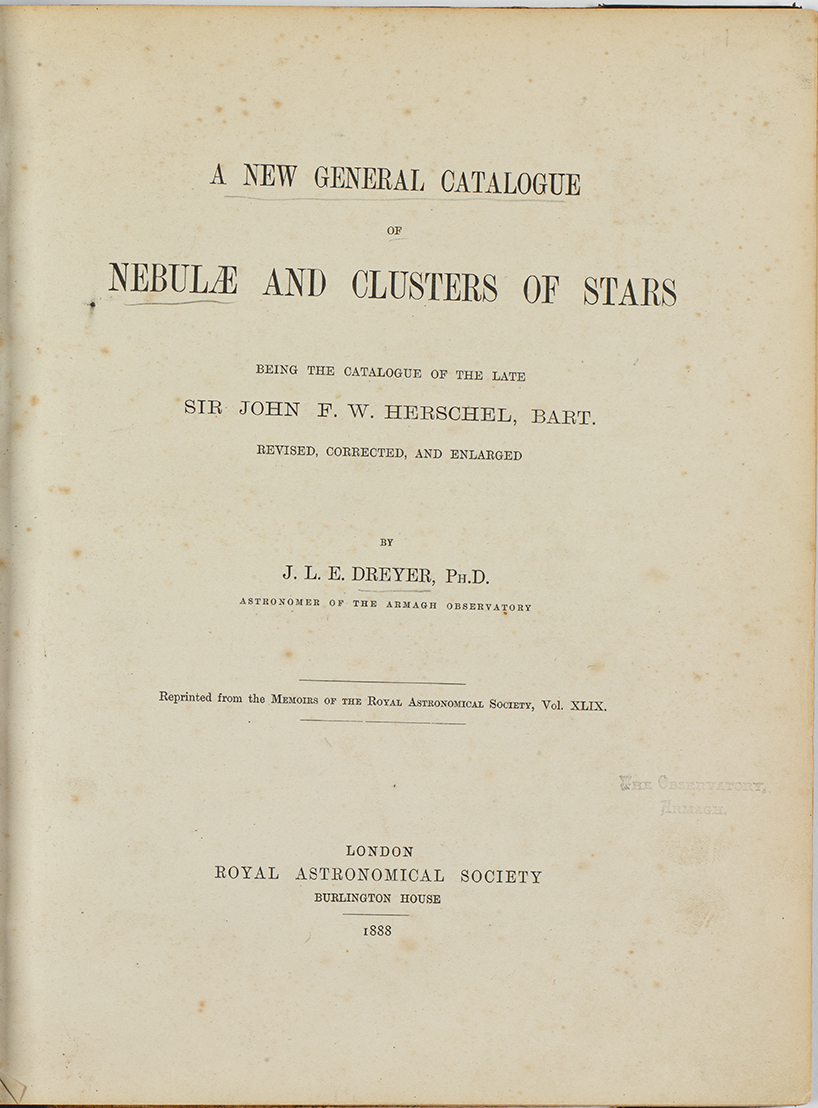
Fig. 24. Dreyer’s NGC Catalogue (© Armagh Observatory)
- Dreyer, Dr. John Louis Emil: An Historical Account of Armagh Observatory. Armagh: H. Greenwood (Liverpool) Printer 1983.
- Glass, Ian S.: Victorian Telescope Makers -- the lives and letters of Thomas and Howard Grubb. Bristol, UK: Institute of Physics 1997.
- Hamilton, James Archibald: An Astronomical Introduction to the Study of Geography. London: John Marshall 1800.
- Lindsay, Eric M: "The astronomical instruments of HM King George III presented to Armagh Observatory." In: Irish Astronomical Journal 9 (1969), pp. 57--68.
- McFarland, John: "The historical instruments of Armagh Observatory." In: Vistas in Astronomy 33 (1990), pp. 149--210.
- McFarland, John: "A modern vision: Eric Lindsay at Armagh." In: Astronomy and Geophysics 45 (2004), pp. 1.18--1.22.
- Moore, Patrick: Armagh Observatory, 1790--1967: The First Years (1967).
- Paterson, T.G.F.: "Armagh Observatory, its Founder and Directors." In: Irish Astronomical Journal 1 (1950), pp. 108--113.
- Paterson, T.G.F.: "Dunsink -- Armagh. Affinities and Contrasts." In: Irish Astronomical Journal 5 (1959), pp. 161--167.
- Ussher, Henry: "An account of the new method of illuminating the wires, and regulating the position of the transit instrument." In: Transactions of the Royal Irish Academy 2 (1788), pp. 13--26.
- Wayman, P.A.: Dunsink Observatory 1795--1985. Dublin: Dublin Institute for Advanced Studies and the Royal Dublin Society 1987.
- Wolfschmidt, Gudrun: Cultural heritage of astronomical observatories. In: Valls-Gabaud, David & Alec Boksenberg (eds.): The Role of Astronomy in Society and Culture. Proceedings of the 260th International Astronomical Union Symposium, held at the Unesco Headquarters, Paris, France, January 19--23, 2009. Cambridge University Press 2011, pp. 229--234. (doi: 10.1017/S1743921311002341).
Links to external sites
- Armagh Observatory, History and Heritage
- Armagh Observatory, Webpage and here
- "A Tour of Armagh Observatory.", retrieved 10 February 2020, or here.
- Armagh Observatory, Armagh
- Butler, John: A Short History of Armagh Observatory (1991).
- Dreyer, Dr. John Louis Emil: "An Historical Account of Armagh Observatory.", retrieved 10 February 2020.
- Thomas Romney Robinson
- An unbroken series of
Daily weather records since 1795 (though the log for the period 1825--1832 has since been lost)
- Centennial Observing Station by the World Meteorological Organisation
- James Short’s Reflecting Telescopes
Links to external on-line pictures
- Armagh 10-inch refractor telescope, 1885 (Stock Image - C025/0064, Science Photo Library)
No multimedia content published
Currently there is no multimedia content published for this case study








